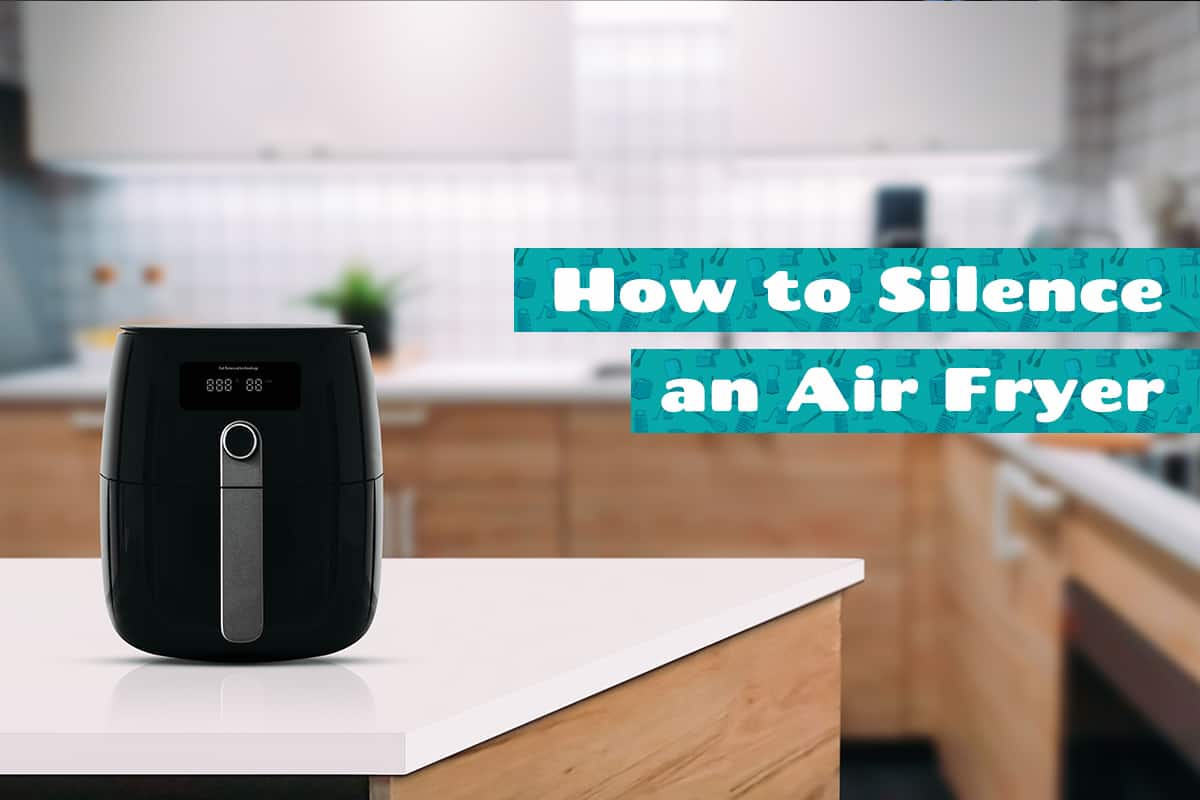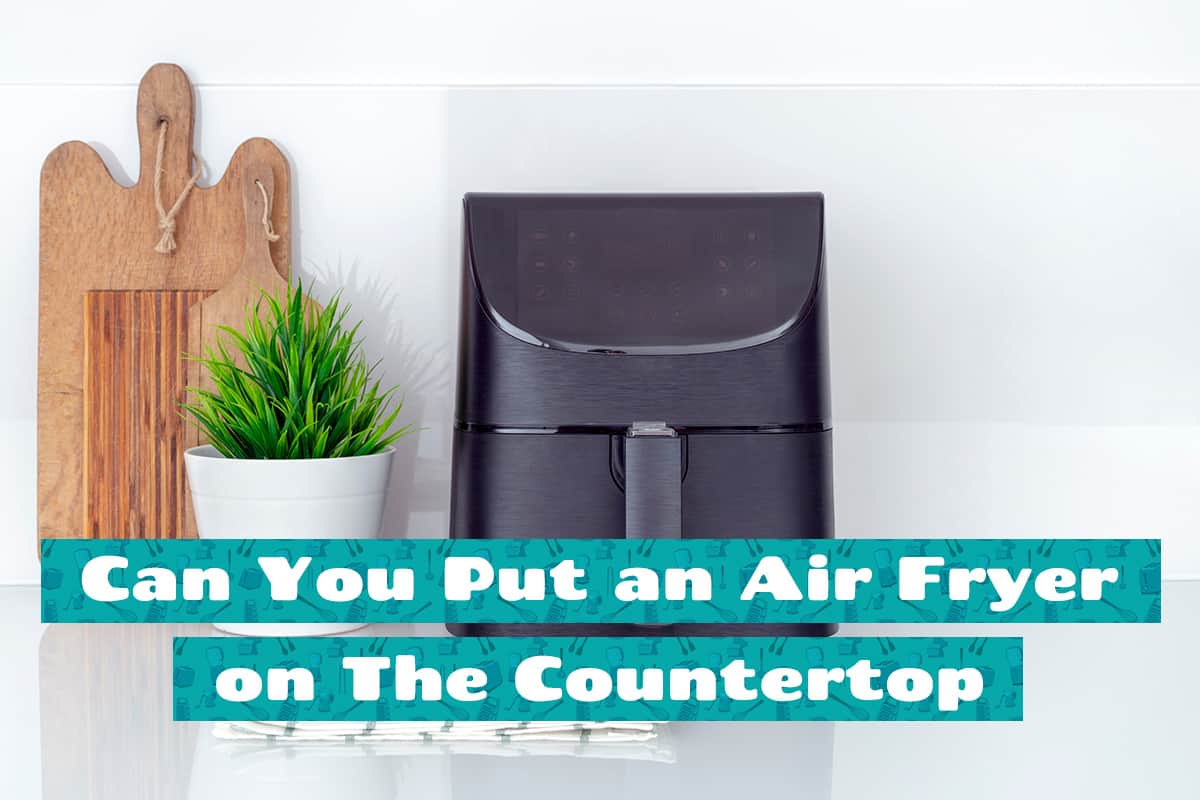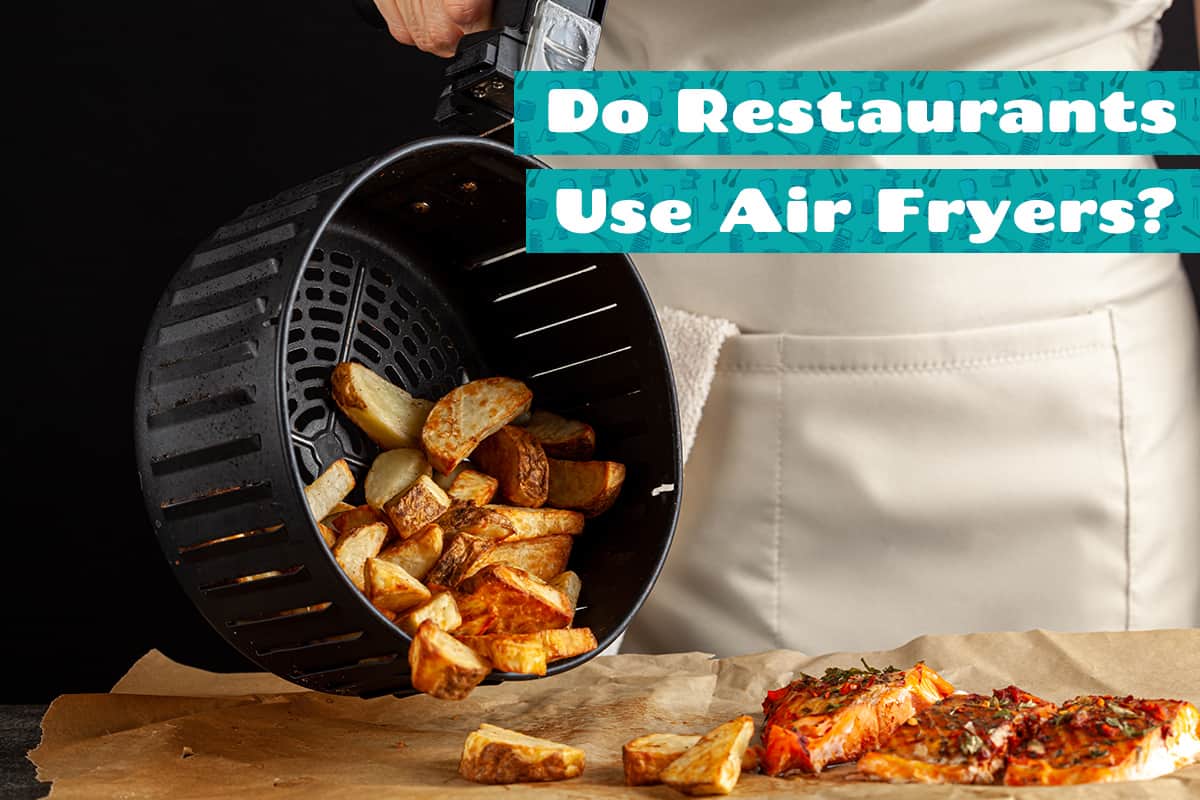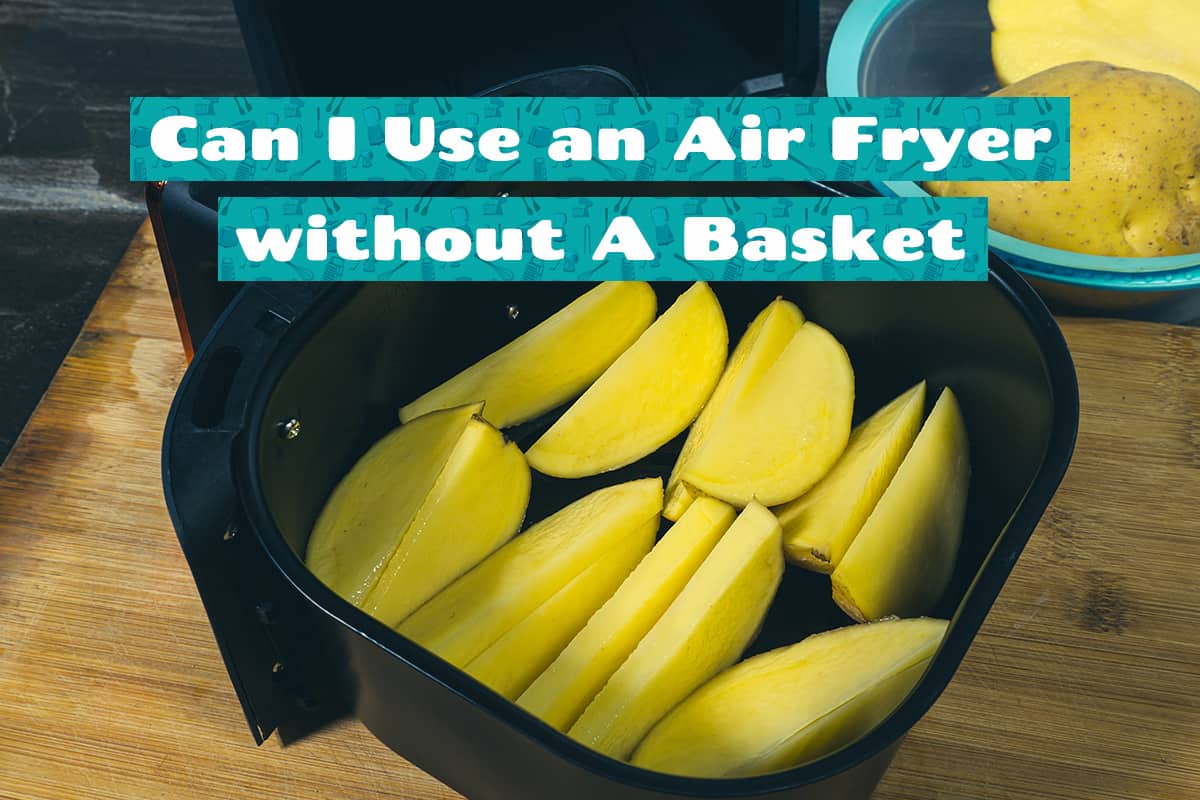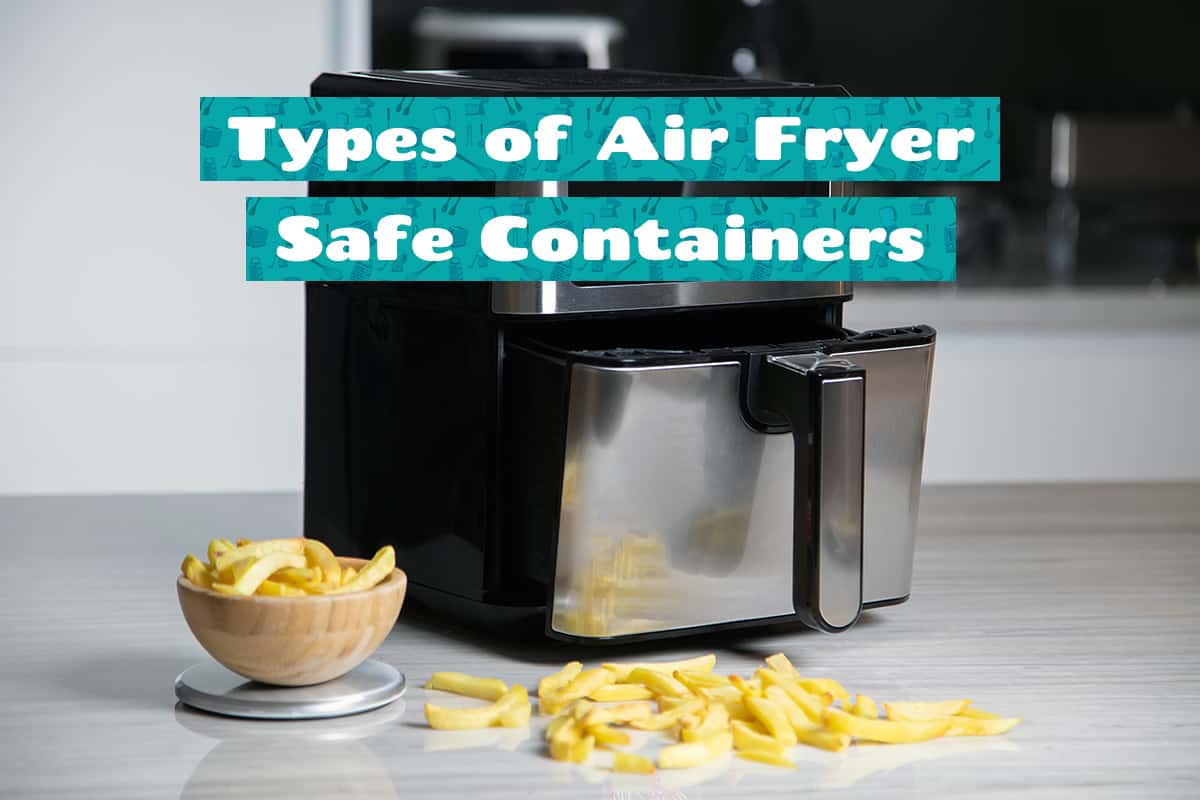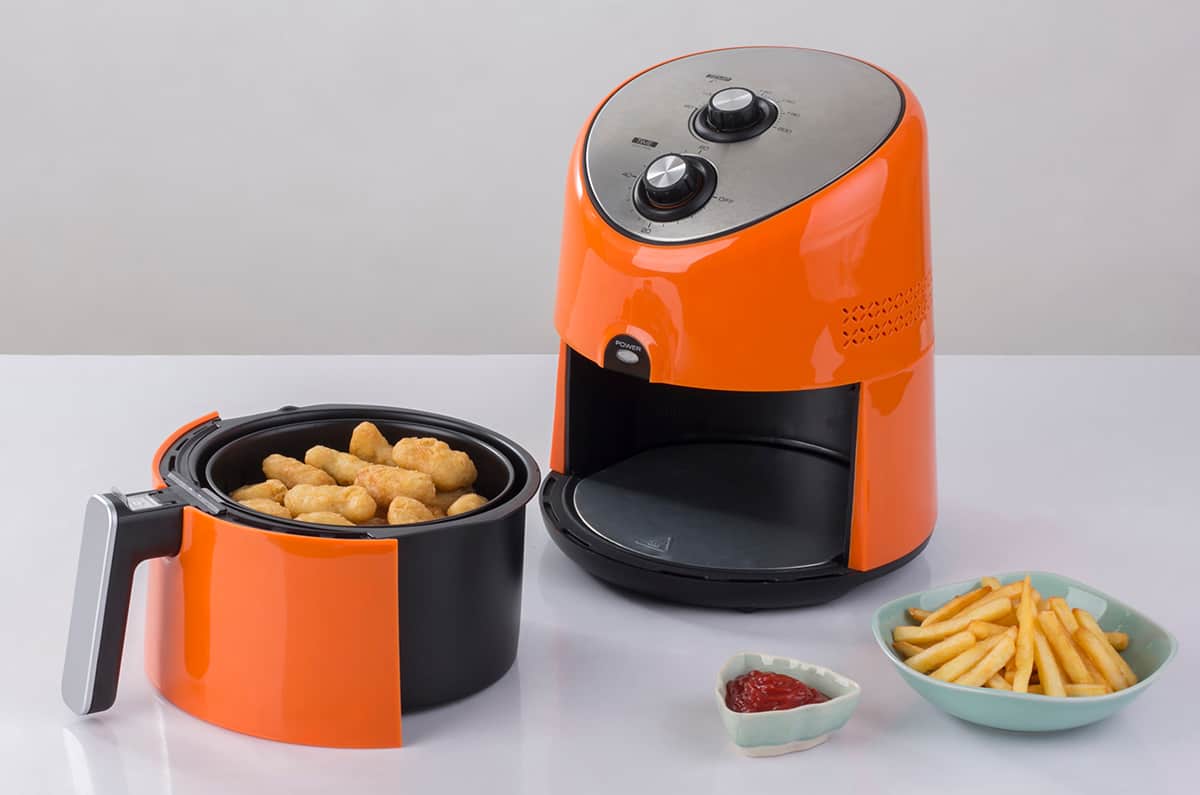You probably heard about how air fryers can crisp up all sorts of food with little to no added fats. But what if you want to prepare something with a bit of sauce, such as macaroni and cheese? Is it safe to put a saucy dish in an air fryer?
If you want to prepare foods with sauces, gravies, glazes, or liquids of any kind in an air fryer, you will need to place the food in a bake-safe container first. Alternatively, you can fashion a container out of aluminum foil to use as a baking container for saucy foods.
In this guide, I’ll talk about how you can safely prepare sauces in your air fryer, as well as what sort of foods you should avoid cooking in an air fryer.
Can You Put Sauce in an Air Fryer?
When people think about air fryers, they usually think about crisping up foods without adding fats to the dish. While this is true, air fryers are much more than just crisping machines. But as versatile as air fryers are, is it possible to put sauces in an air fryer? Short answer: yes, it is.
In case you didn’t know, an air fryer works much in the same way as a convection oven. As a heating element raises the temperature of the device’s cooking chamber, a fan circulates the air in every direction. Your food, which sits on a perforated base, will be exposed to the heated air from all angles, crisping up the exterior and cooking the interior to your desired doneness.
But when it comes to cooking sauces or other liquid-based dishes, it’s not as simple as combining the recipe in the food basket and hoping for the best. The best way to cook sauces in an air fryer is to place it in a bake-safe container.
Accessories for Cooking Sauces in an Air Fryer
The great thing about air fryers is that they are basically just miniature ovens. That means any oven-safe vessel can be used inside an air fryer and vice versa. So, if you’re looking for a bake-safe container to make sauces in an air fryer, just look for an oven-safe label on the baking dish.
There are all kinds of oven-safe baking dishes to choose from. I’ll describe what they are and how they will affect the outcome of your sauces.
Metal baking dishes

Metal baking dishes can be divided into several types based on their material. For the most part, your choices include aluminum, stainless steel, and cast iron.
Aluminum and stainless steel behave similarly in an oven. They heat up exceptionally quickly and lose heat much more slowly when removed from an oven. So, if you’re going to prepare a sauce from scratch in an aluminum or stainless-steel dish, make sure stir the sauce halfway through to prevent scorching.
Cast iron is heavier and harder than the previous metals. As such, it will take much longer to heat up. However, it retains heat incredibly well, which can be risky when making sauces. It’s easier for liquids to become scorched in cast-iron bakeware, so you might have to stir your sauce multiple times during the cooking process.
Silicone baking dishes
![]()
Silicone is the ideal baking vessel for liquids. It’s an insulator, so it takes much longer for silicone to heat up, which reduces the risk of scorching your sauce from the bottom and sides. As an added bonus, sauces will slide right out of silicone containers due to their naturally nonstick surfaces.
The only downside of silicone baking dishes, at least when it comes to making sauces, is that their walls aren’t nearly as sturdy as metal baking dishes. So, unless the silicone dish is wide enough to rest against the inside walls of the air fryer’s food pan, you should think about using another type of bake-safe container.
Glass baking dishes
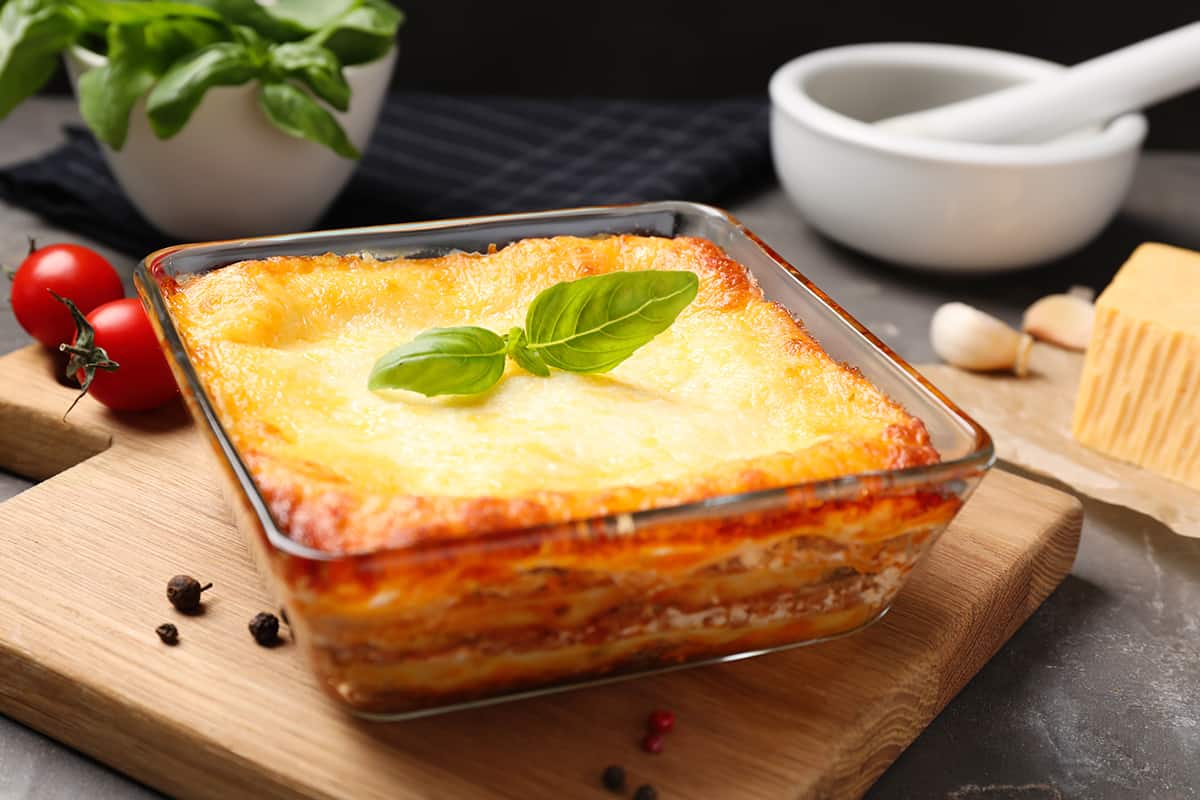
Glass bakeware has been tempered to become several times stronger than regular glass. As such, it can go in an air fryer and withstand extreme temperatures, but you should allow the container to come down to room temperature slowly to prevent it from cracking.
For sauces, glass is a viable option, but it’s far from being the best. Glass bakeware heats up unevenly, which can lead to overcooked corners and severely undercooked centers. So, make sure you stir your sauce frequently to prevent overcooked pockets.
Aluminum foil
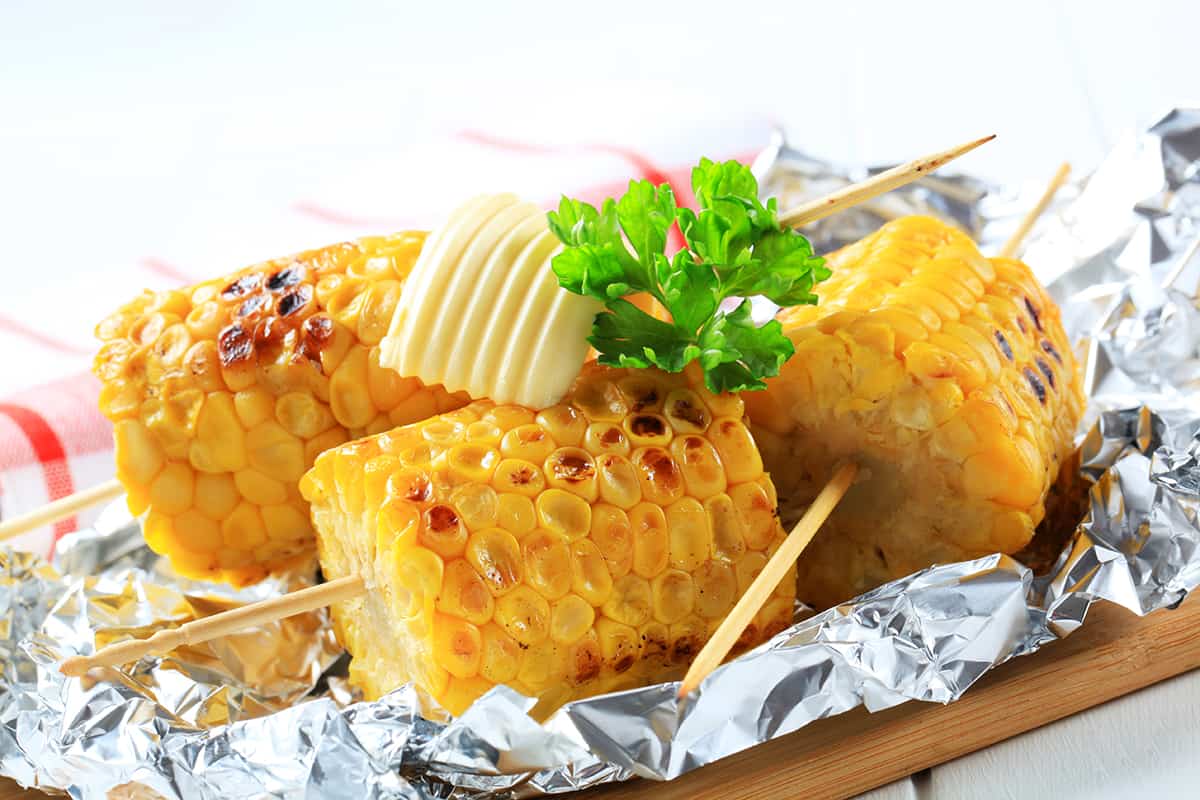
If you don’t have the previous bakeware materials, you can always create an oven-safe container with a sheet of aluminum foil. This material is flexible, so you shouldn’t have much trouble fashioning a makeshift bowl to hold your sauces while they cook in an air fryer.
You might want to double or triple the amount of aluminum foil you use to make an oven-safe bowl since it’s not nearly as sturdy as regular baking dishes. In addition, you might not notice tiny rips or tear in the foil, which can lead to spills and hard-to-clean messes inside your air fryer.
How to Cook Sauces in an Air Fryer
You can cook sauces in an air fryer, or you can brush sauce on your food before stuffing it in an air fryer. Whichever way you choose, you should use one of the baking accessories mentioned in the previous section.
Cooking sauces in an air fryer
- Preheat the air fryer to the desired temperature.
- Pour your sauce into an oven-safe container.
- When the air fryer is up to temp, remove the food basket.
- Place the sauce container in the food basket and insert the food basket back into the air fryer.
- Cook the sauce for as long as you want, making sure to stir the sauce periodically to prevent scorching.
Cooking saucy foods in an air fryer
- Preheat the air fryer to the desired temperature.
- Brush or submerge your food in your sauce of choice and shake off the excess sauce.
- When the air fryer is up to temp, remove the food basket.
- Place the saucy food in the food basket, spreading the food out in a single layer. You may have to cook in batches or use a rack to stack food inside the food basket.
- Cook the saucy food for as long as you want, making sure to flip the food over at the halfway point for maximum caramelization and crisping.
Foods You Should Avoid Putting in an Air Fryer
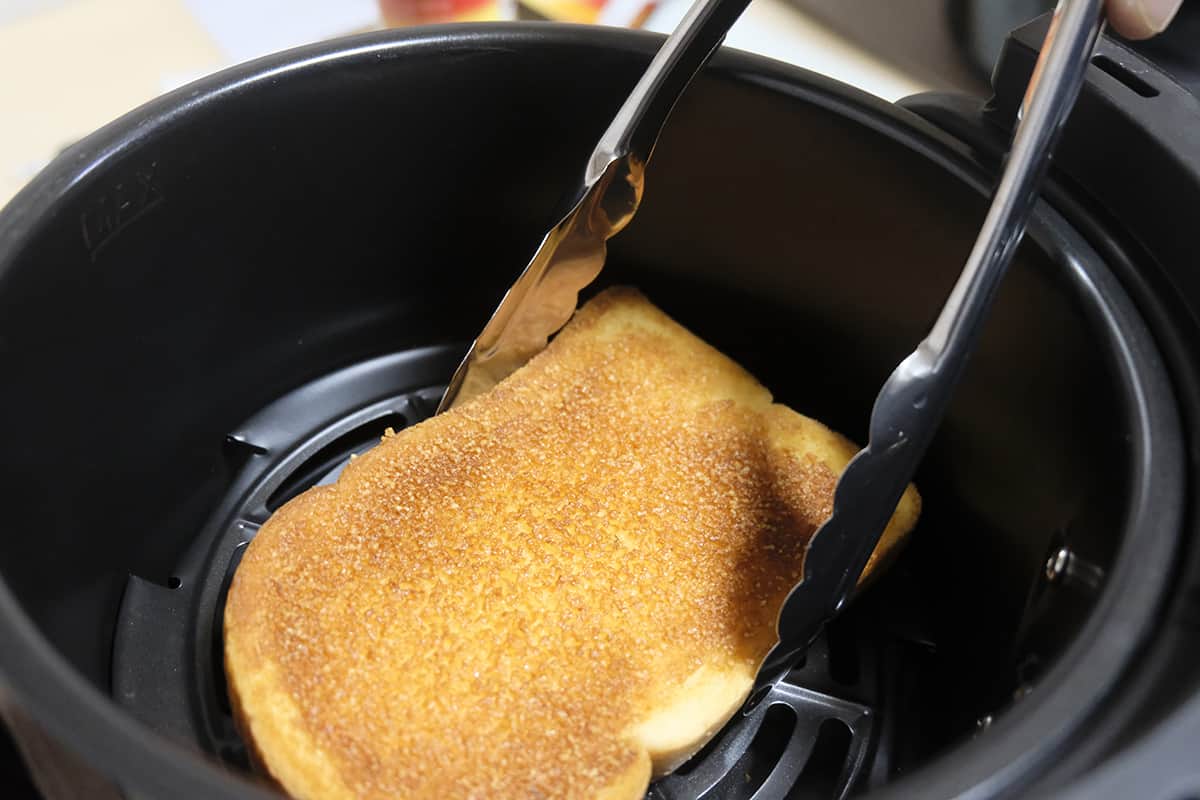
So, it should be clear that you can cook sauces and saucy foods in an air fryer, but what sort of foods should you not put in the food basket?
Tempura
Tempura or battered food does not belong in an air fryer. As much as we’d like to believe that an air fryer fries food, it actually bakes it. Battered food will not turn out as crispy and delicious as it would if you deep-fry them. Instead, you’ll end up with a terrible mess inside the food basket and have to use a soft-bristle brush to scrape away the caked-on batter.
Toast
You might have heard at one point that an air fryer can dehydrate slices of bread to make toast. This isn’t recommended but probably not for the reason you think.
An air fryer’s fan produces powerful gusts of air that will send breadcrumbs flying all over the place, including into the heating element. When this happens, not only will you have to clean the heating coil, but you’ll also have to deal with the smelt of burned crumbs.
Leafy greens
The problem with leafy greens is the same problem as toast—the fan will blow the leaves all over the place. The good news is that you can weigh down the leafy greens by adding a bit of sauce to the mix. Just make sure to place the greens in a bake-safe container beforehand!

